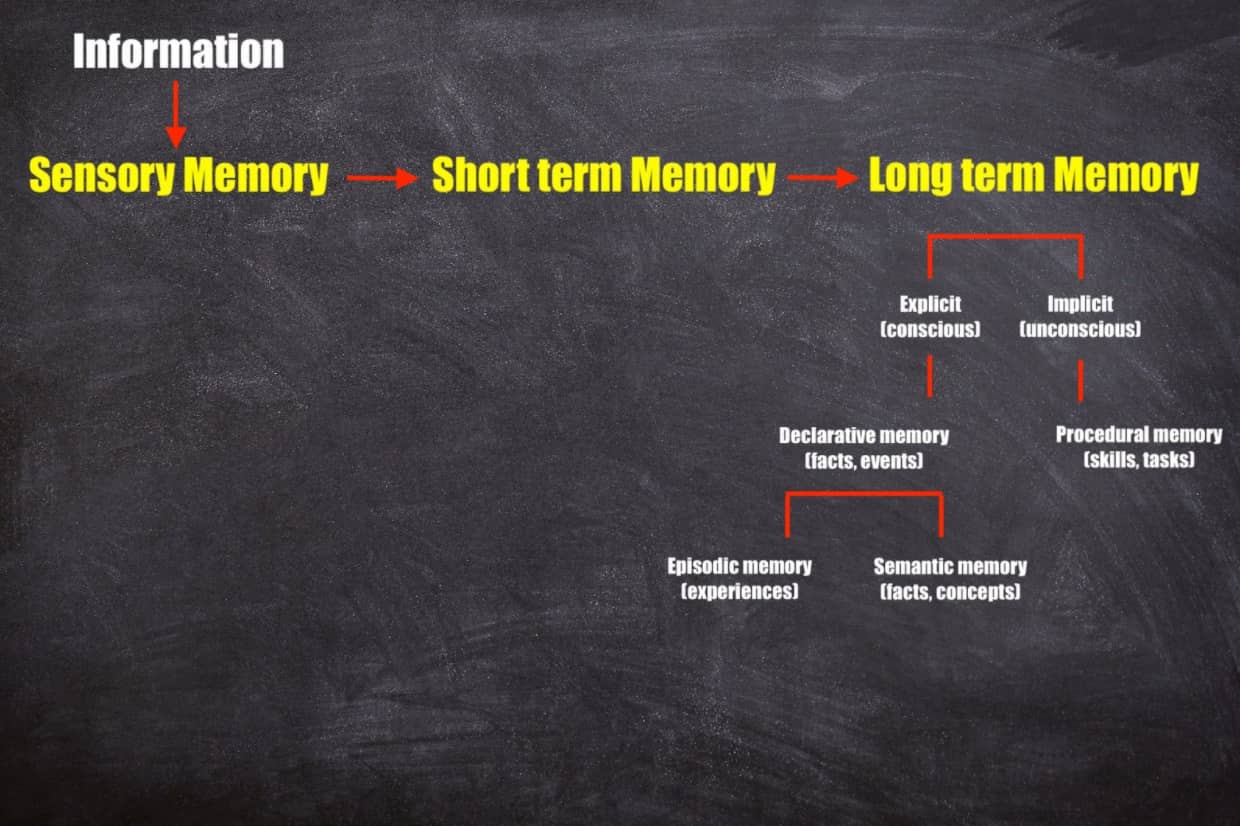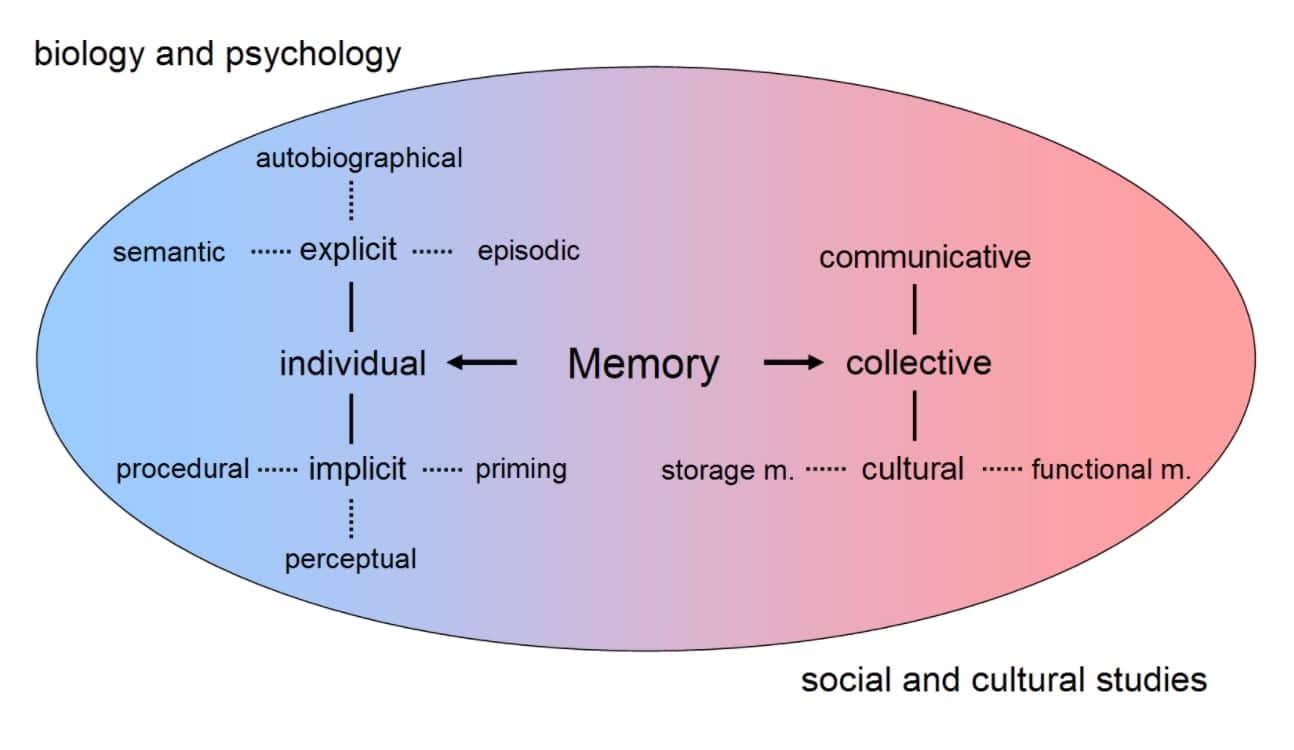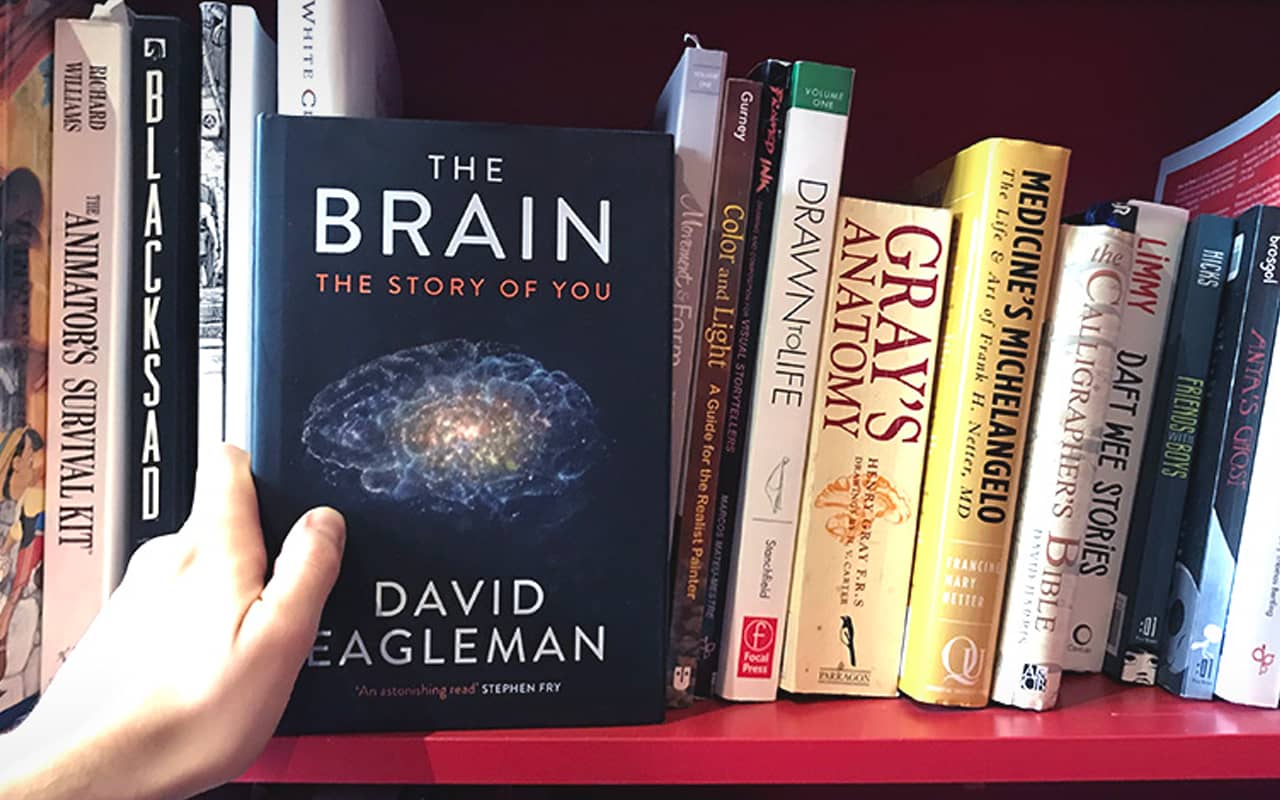 How many different types of memory do we have?
How many different types of memory do we have?
If you search the Internet you can actually find a variety of answers.
But is it three, four, five, or more?
And if you find the correct number, how many can you improve?
Confused?
You are not alone.
The confusion is understandable because memory science is a complex and ever-evolving field.
In fact, there are a number of models of memory types that experts and academics have proposed over the years. As you can see from this infographic, the types of memory are also laid out differently by different disciplines:
Whereas biology and psychology describe different kinds of memory models with particular kinds of terminology, social and cultural studies have words and terms of their own. Both fields also progress and often add or change terms as more research is carried out.
These are just some of the reasons why so much terminology abounds.
So with this background in mind, what are the main different types of memory? The kinds you really need to know.
The Three Main Types of Human Memory
In this post, we will cover the 3 principal types of human memory as our key guides into this world of learning and remembering:
- Sensory memory
- Short-term memory
- Long-term memory
You’ll see how these three types of memory can be broken down further into various constituent parts.
Combined, these parts form what you might think of as a ‘memory orchestra’ – an array of memory types our brains use to help us navigate the world.
These three kinds of memory are also the basis for the three-stage or multi-store model of memory proposed by Atkinson and Shiffrin in 1968. It is still the most agreed upon memory model in science and has been further developed by other academics.
It basically looks like this, starting with the information encountered by your sensory memory:

- Sensory (iconic, haptic, echoic, olfactory, and gustatory)
- Short-term (includes working memory)
- Long-term – explicit (includes declarative, episodic and semantic) and implicit memory (includes procedural)
As you can see, these three memory types serve as umbrella terms for various other kinds of memory. By the end of the article, you will have learnt about the various types of memory and how this knowledge can help your memory powers!
Let’s get started with the first type of memory we all rely upon first and foremost.
One: Sensory Memory
This type of human memory derives directly from the five senses.
These senses are often experienced within a few seconds or can last for minutes.
George Sperling, a cognitive psychologist working in the 1960s, did important work which established just how short sensory memories are. He found that most of our sensory memories are gone within a quarter of a second.
Even though momentary, all memories we ever retain start here and come from your sight, smell, touch, taste, or from what you hear. Here are the names for the specific types of memory.
Sensory memory breaks down into a number of sub-categories.

Iconic – relating to our visual experiences
Echoic – relating sounds we hear.
Haptic – relating to touch
Olfactory – relating to smell
Gustatory – relating to taste
Needless to say, the more senses that are engaged, the more memorable the input. As a consequence, the more likely the information is to remain in longer-term memory.
If you want to guarantee that your sensory memory works better, try these tutorials:
Two: Short-term Memory
Having passed through our sensory memory, information then travels to our short-term memories.
Like sensory memories, we hold new memories for a very short period – usually up to 30 seconds.
George Miller covered this kind of memory in his classic 1956 study, “The magical number seven, plus or minus two: Some limits on our capacity for processing information.”
This study is well known for stating that we have 5 to 9 slots available in our short-term memories. All of our memories pass through this stage and they are either discarded as they are not needed for long, or they get retained and passed into longer-term memory stores.
Of course, memory athletes break this rule all the time. And you can too.
Working Memory
Remember the last time you tried to remember a list of words or a phone number but did not have a pen and paper? This would be using working memory.
Often used interchangeably with short-term memory, this is the form of memory dedicated to performing certain tasks. For example, remembering an internet password, a phone number, or a short shopping list.
Without rehearsal, memories in this area are not retained for long. If some of these working memories are useful for a longer period, it might be worth committing them to long-term memory which is the next type of memory we will turn to.
Three: Long-term Memory
This form of memory is for longer-term storage and has unlimited capacity.
In The Brain: The Story of You (2016), David Eagleman says we have a zettabyte of memory at our disposal. This is considered enough to store approximately 30% of all the information in the world.
Whilst you may never need to remember that much, this is the kind of memory people usually would like to improve. We may broadly divide the kinds of long-term memory into explicit memory involving conscious thought, and implicit memory which involves unconscious thought.
Explicit Memory
This type of memory recalls specific events and recollections from the past and has three elements to it:
This is the recall of facts and snippets of memory that take conscious effort to remember. Whenever you were preparing for a test, you were working on improving your declarative memory and your ability to recall those particular facts. Declarative Memory is further divided into two related parts – episodic and semantic memory. They often work in harmony such as when recalling autobiographical details about your life.
Episodic Memory
As the word suggests, this kind of long-term memory relates to episodes – brief snippets from your life – and their recall. These memories are all the stronger if they are associated with emotions whether good or bad. You may never forget being bitten by a dog, or the way you felt the day you got a shiny bike for Christmas. We can also include autobiographical memory here – we can all relate to moments in our lives or stories that we have recalled multiple times that we can ‘declare’. These are also sometimes called experiential memories.
Semantic Memory
This is the body of knowledge stored in our brains that helps us understand and describe the world. For example, knowing what a dog is, how many days are there in each month, knowing that the sea is blue, the grass is green and so on.

These types of long-term memories represent our general knowledge about the world – facts. As the word suggests, these memories are the essential building blocks that provide the context and the meaning in our lives. They are stored away in our brains for retrieval.
For example, if you are recalling your wedding day (an episodic memory) you need to have the key building blocks for the story – the color of the bride’s dress, the type of car, the church, the guests, the speeches, the weather and so on. This is an illustration of how episodic memories and semantic memories are often used together.
Implicit Memory
The other major category inside long-term memory is implicit memory. This is a kind of memory that does not have to be consciously recalled and can affect thoughts and behaviors. These memories become automatic after an initial period of exposure, study and practice. Studies have been done, for example, around how strongly people associate the melodies and words in a song. If you play the same melody with different words, people often say they don’t know it. Implicit memory often involves the brain making associations between two types of inputs in this way.
Procedural Memory
This is often the most highlighted element inside the implicit memory category. This kind of long-term memory relates to carrying out a certain task or list of tasks.
For example, many of us would have learnt to ride a bike or drive a car. After initially learning, then consciously doing and then repeating, we no longer have to make a conscious effort to carry out these tasks.

Indeed, it is often possible to carry out another unrelated activity whilst carrying out these kinds of tasks. For example, you can sing along with your favorite song while driving your car.
Procedural memory usually involves knowledge that gets stronger primarily through repetition and feedback. These are the types of memories that high-level performers in sports or other fields are trying to cultivate. A golfer cannot consciously remember every single movement in his swing when trying to hit the ball. He has to practice the movement and get feedback until the movement becomes unconscious and the memories therein are implicit.
Improving your memory
As we’ve seen, there are primarily three stages of memory. Another way of describing them is to call them:
- Encoding
- Storage
- Retrieval
Encoding can be done via the senses, storage is either short-term or long term and retrieval involves both short-term and long term memory. See here for some further discussion on the stages of memory.
Now, when people talk about improving our memories they are generally thinking about improving retrieval. However, we need to treat memory improvement holistically and improve all three levels.
With that in mind, what does understanding the types of memory mean for improving all of these levels?
Mnemonic devices
Devices such as these help recall by giving the brain a simple accessible framework to use. Everybody remembers things such as Every Good Boy Deserves Fruit to remember the names for musical notes that fall on the lines on a stave. These are used extensively in many fields to remember certain facts and naturally, you can invent your own.
Testing and The Rehearsal Loop
It is something that our teachers used with us at school but worth remembering. The act of repeatedly retrieving memories has a greater impact than long study periods. When you have something you are trying to retain in your short-term memory you are advised to use a rehearsal loop to keep the memories fresh. Over an extended time, using rehearsal and testing, memories can find their way into long-term memory. If these activities can be turned into games to make them more fun, the results are certain to be better.
Immediate Feedback
Immediate feedback creates better long term memories too. When undertaking any activity, and this applies particularly to learning a skill, it is ideal to have immediate feedback so you can correct your faults and then practice the skill correctly. There is nothing worse than remembering the wrong way to do something!
Sleep and Health
Sleep works as a cleansing system that reduces the presence of toxins and improves brain function. Those who sacrifice sleep are likely to see a build-up of metabolic toxins such as the sticky protein beta-amyloid. Naturally, minimizing stress, eating well, and exercise all have great impacts on the brain and its memory function.
Some coffee
Research has shown that a certain quantity of coffee can improve our mental sharpness but too much has the opposite effect.
Play Brain Games and Have Fun
As with muscles in the body, the more you use them the stronger they get. Brain games or anything that exercises the grey matter can have a positive benefit on overall memory performance.
The study of the brain continues and new discoveries bring slight changes to the theories. Our memories are immensely powerful and have unlimited capacities. With a deeper understanding of the brain’s user manual and the types of memory stored therein, we can get more from our memories and an accompanying positive impact on our lives.
To maximize the impact, consider signing up for my Free Memory Improvement Kit. In just a few days, you can experience tremendous boosts in your memory, and have fun while doing it.
Related Posts
- Simon Luisi On Expanding The Major System In Your Memory Castle
Simon Luisi, founder of the Canadian Memory Championships, shares his expansion of the Major System.…
- Memory Athlete Braden Adams On The Benefits Of Memory Competition
Braden Adams is one of the most impressive memory athletes of recent times. Learn to…
- 3 Blazing Fast Ways To Increase Memory Retention
Memory retention... what the heck is it? Is it worth worrying about? If so, can…







